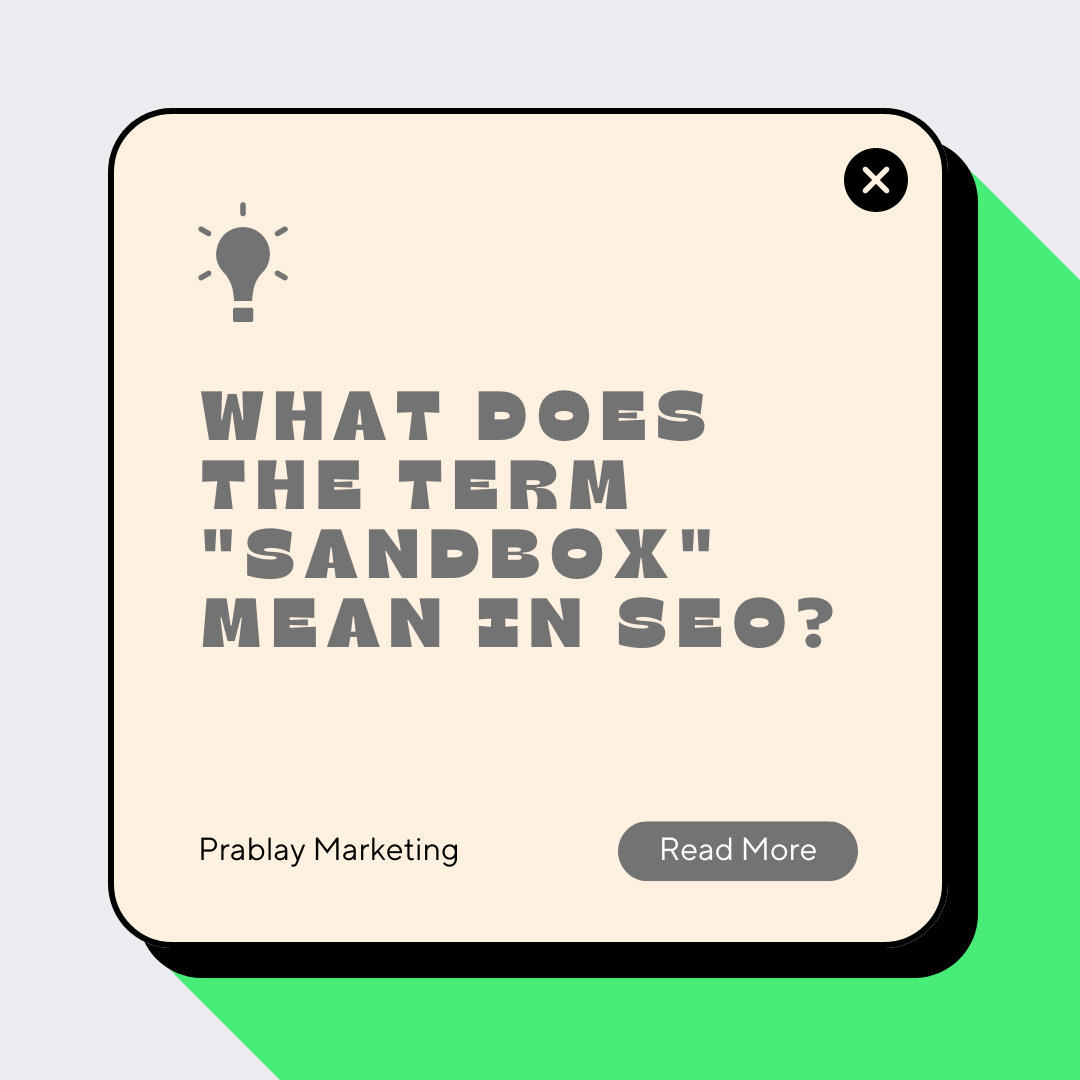What is Google Sandbox in SEO?
The term “Google Sandbox” refers to a theory in SEO (Search Engine Optimization) that suggests new websites are placed in a sort of probation period by Google, during which their ability to rank highly in search results is limited. This concept is not officially confirmed by Google but is widely believed and discussed within the SEO community. The idea is that Google restricts the visibility of new sites to ensure they are genuine and not spammy, which prevents them from ranking too quickly, regardless of how well-optimized they might be.
The Google Sandbox effect can be frustrating for new website owners who expect to see immediate results from their SEO efforts. Even with high-quality content, strong backlinks, and well-optimized pages, new websites often struggle to appear on the first page of search engine results, which can hinder early growth and visibility.
History of Google Sandbox
The concept of the Google Sandbox first gained attention around 2004 when SEO professionals noticed a trend: new websites, despite having good content and backlinks, were not ranking as expected. These websites were not penalized per se, but they were not rewarded with high rankings either. This led to speculation that Google had implemented a filter or “sandbox” to prevent new sites from gaining visibility too quickly.
The sandbox theory was never officially acknowledged by Google, but many in the SEO community observed that new websites often took several months to start ranking well, leading them to believe that Google was implementing some form of delay in ranking new sites. This period was dubbed the “Sandbox effect.”
Over the years, the Google Sandbox theory has evolved. While some believe it still exists in some form, others think that what was once considered the Sandbox is now part of Google’s broader algorithm, which includes filters and penalties for low-quality or spammy content.
How Long Does a Sandbox Period Last?
The duration of the sandbox effect can vary widely depending on several factors, including the competitiveness of the industry, the quality of the website’s content, and the strength of its backlink profile. Typically, the sandbox period is believed to last anywhere from a few weeks to several months, with some SEO experts suggesting that it could extend up to six months or more.
During this time, a new website may struggle to rank for competitive keywords, even if it has high-quality content and strong backlinks. However, the site may still rank for less competitive, long-tail keywords, which can help it gain some visibility and traffic during the sandbox period.
The key to minimizing the duration of the sandbox effect is to focus on building a strong, reputable website with high-quality content and legitimate backlinks. By demonstrating to Google that your site is trustworthy and valuable, you can potentially shorten the sandbox period and start ranking more quickly.
Why is Your New Website Not Ranking?
If your new website isn’t ranking as expected, the Google Sandbox might be one of the reasons, but it’s important to consider other factors as well. Here are some common reasons why a new website might struggle to rank:
- Lack of Quality Content: Google prioritizes websites with high-quality, relevant content. If your website lacks depth or offers little value to users, it will likely struggle to rank.
- Poor Backlink Profile: Backlinks are a critical ranking factor in Google’s algorithm. If your site lacks backlinks or has low-quality links, it may not rank well.
- Technical SEO Issues: Technical issues, such as slow page load times, poor mobile optimization, or errors in the website’s code, can hinder your site’s ability to rank.
- High Competition: If you’re targeting highly competitive keywords, it may take time for your website to start ranking, especially if you’re up against established sites with strong SEO.
- Indexing Problems: If Google hasn’t indexed your site properly, it won’t appear in search results. Ensuring that your site is fully indexed is crucial for ranking.
How to Get Out of Google Sandbox?
If you believe your website is in the Google Sandbox, there are several strategies you can employ to help it escape and start ranking:
- High-Quality Content: Creating high-quality, valuable content is one of the most effective ways to gain visibility in search results. Focus on creating in-depth, well-researched articles, blog posts, pages that provide real value to your audience, and on-page optimization. High-quality content not only helps attract backlinks but also encourages user engagement, which can signal to Google that your site is worth ranking.
- Get Indexed: Ensure that your website is fully indexed by Google. You can do this by submitting your sitemap to Google Search Console and checking for any indexing issues. Regularly updating your content and adding new pages can also help Google crawl and index your site more frequently.
- User Traffic: Driving user traffic to your website can help you get out of the sandbox faster. Promote your site through social media, email marketing, and other channels to attract visitors. Increased user engagement and traffic can signal to Google that your site is gaining popularity and deserves to rank.
- Social Signals: Social signals, such as likes, shares, and comments on social media platforms, can indirectly impact your SEO. While Google has stated that social signals are not a direct ranking factor, they can still contribute to your site’s overall visibility and traffic, which can help you get out of the sandbox.
- Site Authority: Building your site’s authority is crucial for ranking well in search results. This can be achieved by acquiring high-quality backlinks from reputable websites, creating valuable content that earns mentions and citations, and establishing your brand as a trusted source of information in your niche.
- Target Low-Competition Keywords: During the sandbox period, it can be beneficial to target low-competition, long-tail keywords. These keywords may have lower search volume, but they are easier to rank for and can help you build initial traffic and authority. As your site grows, you can gradually target more competitive keywords.
- Optimize Technical SEO: Technical SEO plays a significant role in how well your site ranks. Ensure that your website is optimized for speed, mobile-friendliness, and usability. Fix any crawl errors, broken links, or other technical issues that could hinder your site’s performance. A well-optimized site is more likely to rank higher and escape the sandbox.
Conclusion
The concept of the Google Sandbox remains a topic of debate in the SEO community. Whether it’s a real filter or just a result of Google’s evolving algorithm, it’s clear that new websites often face challenges in ranking during their early stages. By focusing on high-quality content, building site authority, and optimizing technical aspects, you can increase your chances of breaking free from the sandbox and achieving better search engine rankings.




